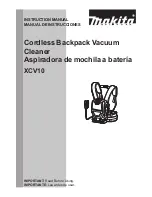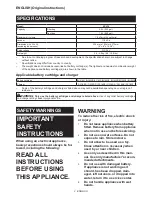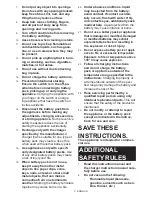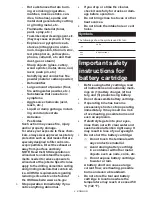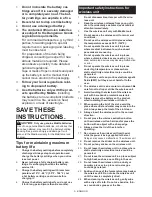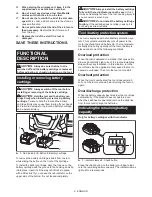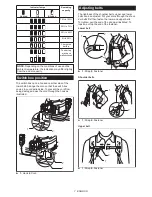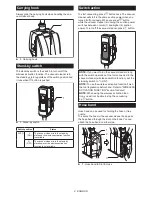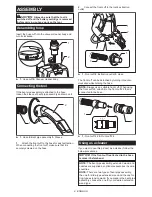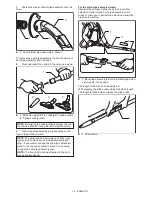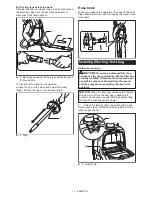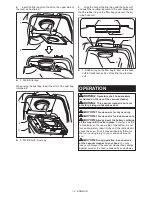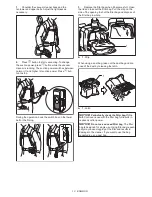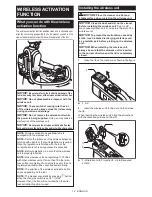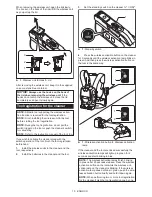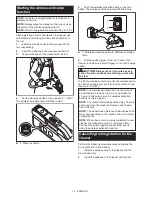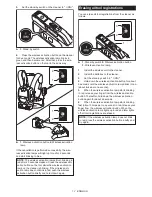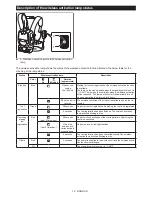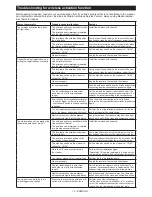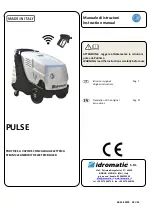
4 ENGLISH
•
Hot substances that are burn-
ing or smoking (cigarettes,
matches, incense sticks, can-
dles, hot ashes), sparks and
metal dust generated by cutting
or grinding metal, etc.
•
Flammable material (toner,
paint, spray, etc.)
•
Foam like carpet cleaning agent, etc.
(they may cause explosion or fire)
•
Explosive or pyrophoric sub-
stances (nitroglycerin, alumi-
num, magnesium, titanium, zinc,
red phosphorus, yellow phos-
phorus, celluloid, etc. and their
dust, gas or steam)
•
Sharp objects (glass, cutlery,
wood splinter, metal, stone, nail,
razor, push pin, etc.)
•
Solidifying and conductive fine
powder (metal or carbon powder)
•
Dehumidifier
•
Large amount of powder (flour,
fire extinguisher powder, etc.)
•
Substances that cause toxic
symptoms
•
Aggressive chemicals (acid,
leach, etc.)
•
Liquid or damp garbage, includ-
ing vomit and excreta
•
Asbestos
•
Pesticides
Such action may cause fire, injury
and/or property damage.
To reduce your exposure to these chem-
icals, always wear approved respiratory
protection such as dust masks that are
specially designed to filter out micro
-
scopic particles. Direct the exhaust air
away from your face and body.
NOTE: Read the OSHA regulation on
silica dust to understand the require-
ments needed to reduce exposure to
silica dust at the jobsite. Specific rules
apply to the drilling, demolition cutting
and grinding materials that contain sil-
ica. All OSHA requirements regarding
reducing silica dust can be found at
the OSHA website: www.osha.gov.
3.
Stop operation immediately if you
notice anything abnormal.
4.
If you drop or strike the cleaner,
check it carefully for cracks or dam-
age before operation.
5.
Do not bring close to stoves or other
heat sources.
6.
Do not block the intake hole or vent
holes.
Symbols
The followings show the symbols used for tool.
volts
direct current
Important safety
instructions for
battery cartridge
1.
Before using battery cartridge, read
all instructions and cautionary mark-
ings on (1) battery charger, (2) bat-
tery, and (3) product using battery.
2.
Do not disassemble battery cartridge.
3.
If operating time has become
excessively shorter, stop operating
immediately. It may result in a risk
of overheating, possible burns and
even an explosion.
4.
If electrolyte gets into your eyes,
rinse them out with clear water and
seek medical attention right away. It
may result in loss of your eyesight.
5.
Do not short the battery cartridge:
(1)
Do not touch the terminals with
any conductive material.
(2)
Avoid storing battery cartridge
in a container with other metal
objects such as nails, coins, etc.
(3)
Do not expose battery cartridge
to water or rain.
A battery short can cause a large
current flow, overheating, possible
burns and even a breakdown.
6.
Do not store the tool and battery
cartridge in locations where the
temperature may reach or exceed 50
°C (122 °F).

